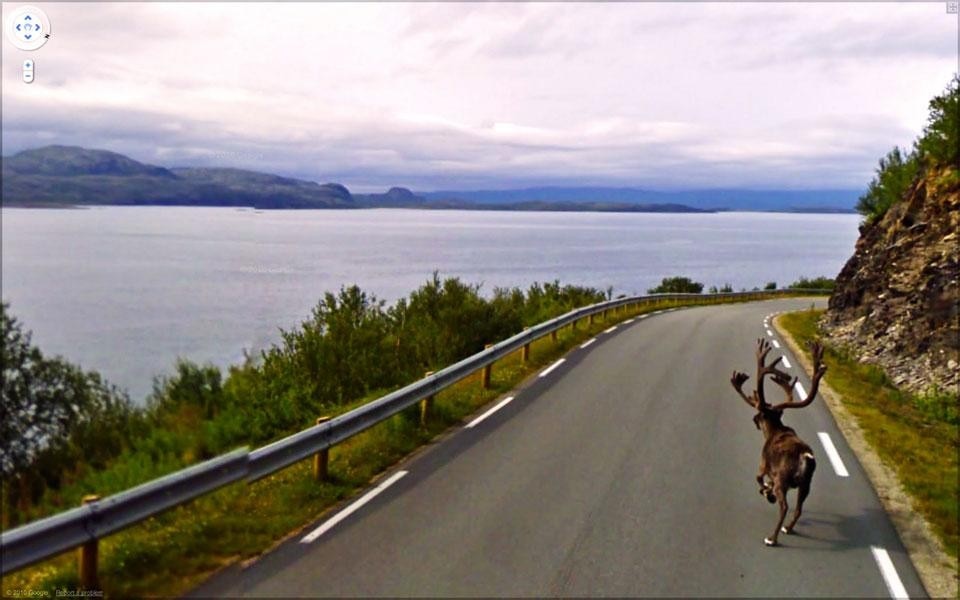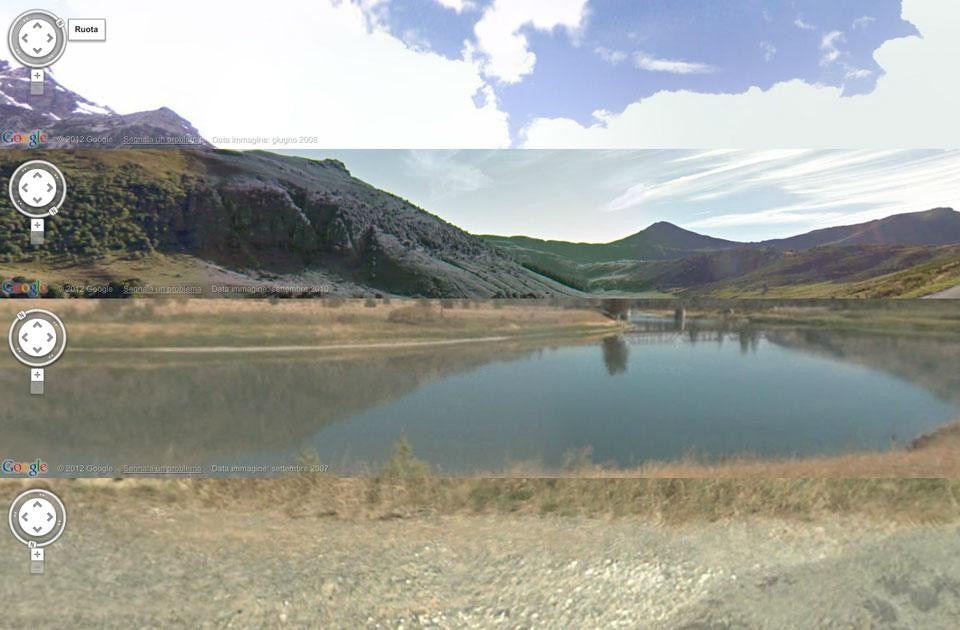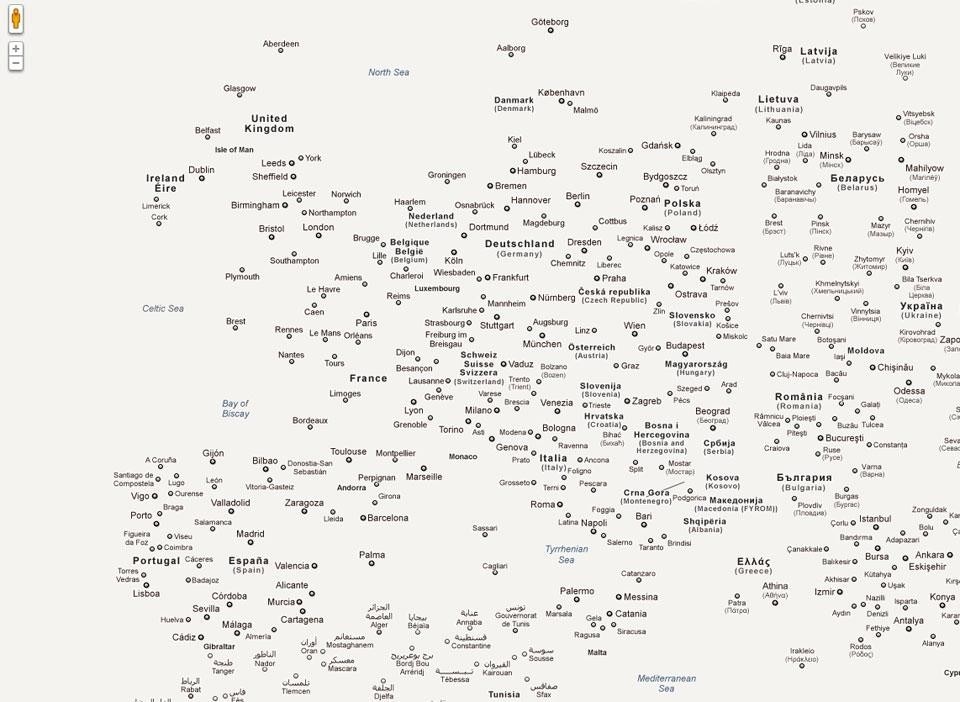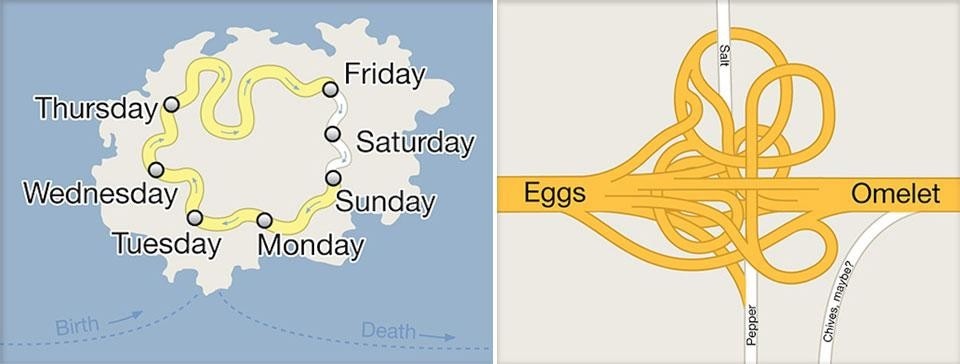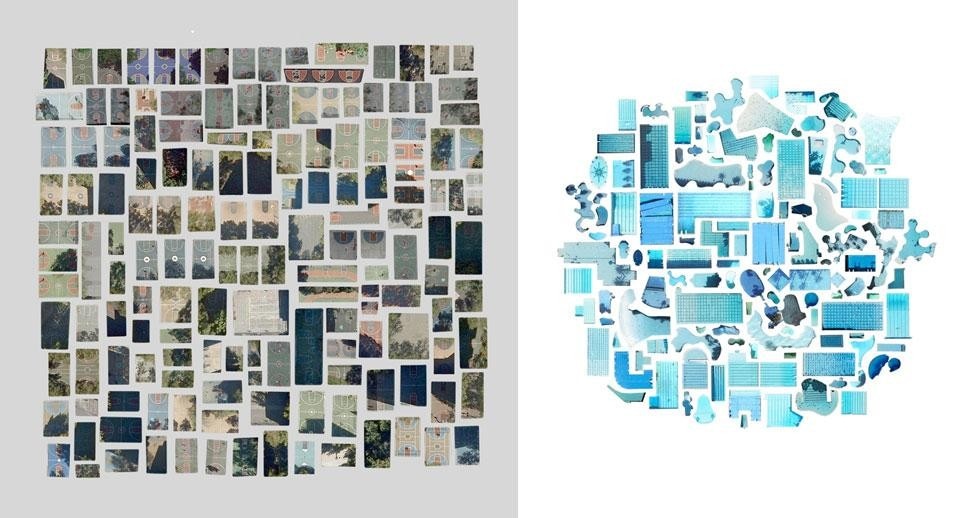This may be why, when surfing the Web, you keep encountering all sorts of artists, graphic designers and creators who are trying to create enterprising visual experiments using the Google virtual planisphere. An enormous, never-ending photograph of the globe, turned inside out like a sock, creating a unique universal language. While it could be impossible to trace all of this frenetic activity in the Web, searching and extracting some examples can generate an outline of these kinds of experimentations.
A first example is the painstaking search process conducted by young US artist Jenny Odell. In All the People on Google Earth, she had already amassed information without context, assembling large crowds of people floating in mid-air. Odell's Satellite collections series, on the other hand, shows masses of ships, swimming pools and golf courses, again taken out of context and neatly arranged as in a catalogue of life-altering discoveries. Her subsequent Signs of Life series focuses on graphic design, via an overflowing reproduction of road signs.
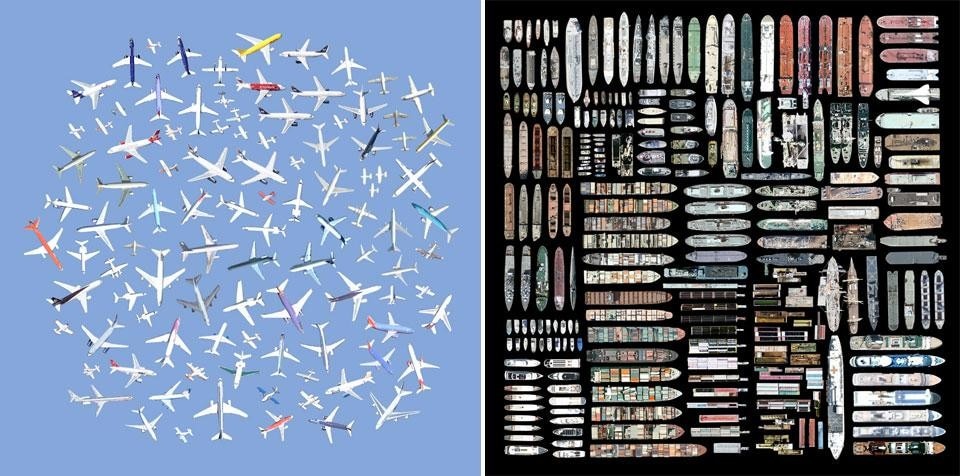
New Yorker Clement Valla plays, instead, with distorted reality, identifying and reproducing an error in the automated algorithm used by Google to print photographs of the globe. A satellite photograph reconstructed on the map inevitably squashes the bridges down onto rivers and straightens out the tangle of roads. By denying jumps, it annuls heights. It is a dreamlike abstraction that at times seems like a lesson, telling us that the single, polyphemic point of view is short-sighted by definition.
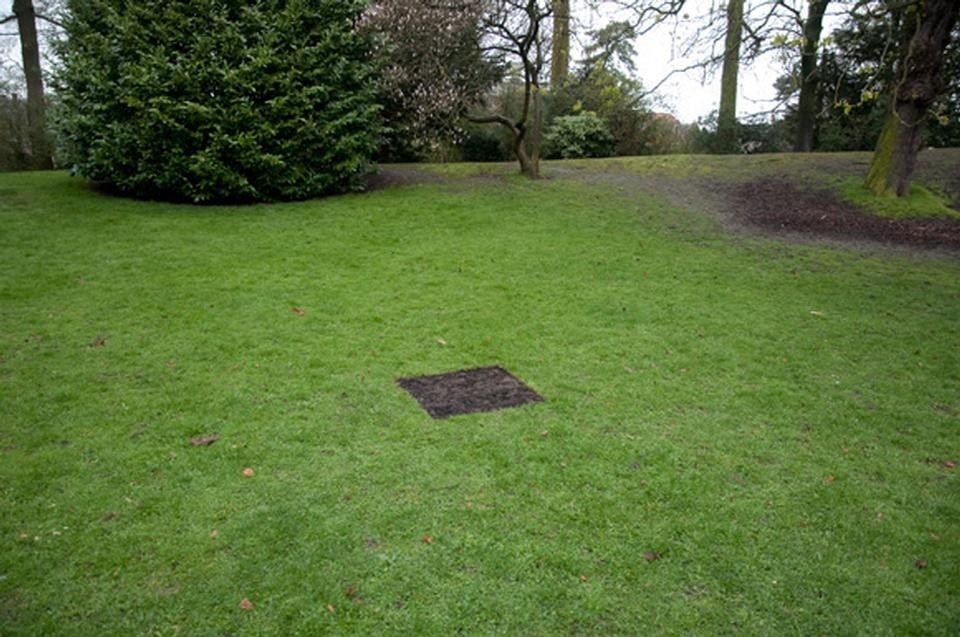
Similarly, French digital-art wonder-kid Julien Levesque sieved through the archives of the digitalised world in search of similar views to cut out and create new, false ones for his Street Views Patchwork.
The same experiments conducted in the past by the Dadaists with photography and the Bauhaus with tubular steel can be seen again today in the digital world
